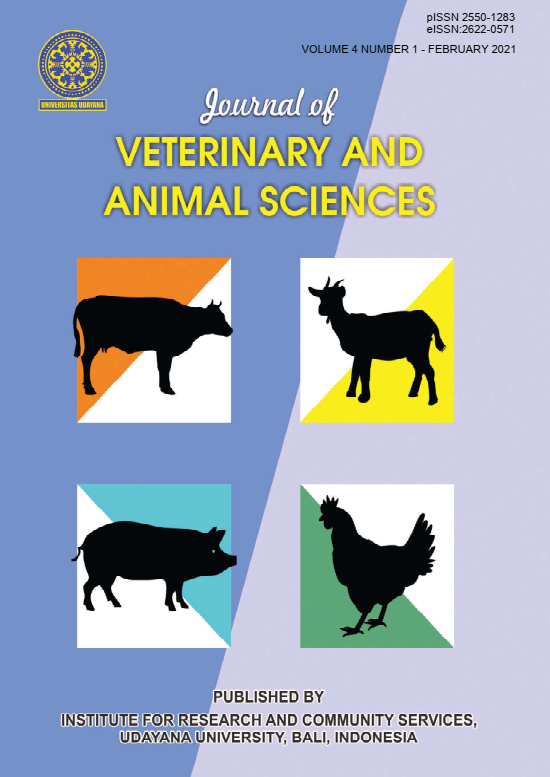Organoleptic Quality and Microbiological of Barbecue Bali Suckling Pig on Carcass Aging Technique
Abstract
Abstract. The aims of the research were to increase quality of barbecue Bali suckling pig on carcass aging technique and to see its pork microbiological quality after aging and to be a product. The aging is a handling fresh pork after slaughtered the animals where it carcass was hung up or frizzed for a certain time on the frozen temperature (0o C). The research design used was Completely Randomized Design with 3 treatments i.e. P0 (Control, fresh carcass without aging), P1 (carcass aging for 1 day, and P2 (carcass aging for 2 days). The aging process was conducted at PT Aroma Duta Rasa, Denpasar. Furthermore, the carcass was processed to be a product called barbecue suckling pig with full of Bali traditional spice. After that, organoleptic quality test was conducted on some semi trained panelists, and microbiological test on eye muscle area. Result analysis of nonparametric of Kruskal Wallis showed that organoleptic variables on general performance, tenderness and it acceptance in general gave significant preferences level (P < 0.05) on P1, while variable of colour, aromatic, texture, and taste were no significant different (P > 0,05). Total amount of TPC microbial on the P0 was 1.7 x 103 a CFU/g, P1 was 2 x 103 CFU/g and P2 was 2.8 x 103 CFU/g no significant different (P > 0.05), while microbial population of coliform and E. Colli were not found. Base on SNI 3932.2008 that quality of Total Plate Content microbial of meat quality maximum 1 x 106 FCU/g. From all data mentioned above could be concluded that the quality of organoleptic of aging barbecue suckling pig that aging for 1 day was the best But, microbiological quality of the barbecue suckling pig that aging for 1 up to 2 days were still safe to be consumed because their TPC was still less than SNI regulation.











